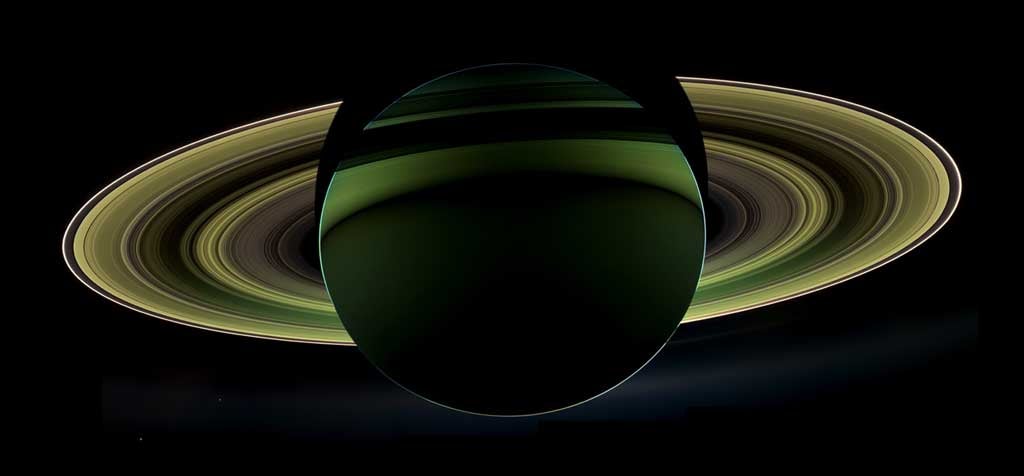In 140 years of telescope observations, great storms have erupted on Saturn six times. Cassini and observers on Earth tracked the most recent of these storms from December 2010 to August 2011. During that time, the storm exploded through the clouds, eventually winding its way around Saturn.
In this recent study, scientists describe the effect they believe is responsible for the periodic outbursts. The basic idea is that water vapor is heavier than the hydrogen and helium that make up the bulk of Saturn’s atmosphere, so once each giant storm dumps its huge mass of rain, the air within the clouds is left lighter than the atmosphere below. For a time, this situation shuts off the process of convection — in which warm, moist air rises and cool, dense air sinks — that creates new clouds and storms.
“For decades after one of these storms, the warm air in Saturn’s deep atmosphere is too wet and too dense to rise,” said Cheng Li from the California Institute of Technology in Pasadena. “The air above has to cool off, radiating its heat to space before its density is greater than that of the hot, wet air below. This cooling process takes about 30 years, and then come the storms.”
Li thinks the episodic nature of the storms indicates Saturn’s deep atmosphere contains more water, relative to the other atmospheric constituents, than Jupiter. The researchers suggest Saturn’s extra-wet interior might explain why the planet has such epic tantrums, whereas Jupiter does not. If Saturn’s deep atmosphere were drier, scientists would expect continuous smaller storms as observed on Jupiter, Li said. Instead, Saturn’s outbursts are episodic and quite explosive.
Other observations by ground and space-based telescopes have hinted at a wet interior for Saturn. “Previous studies using spectroscopy have shown that Saturn’s interior is enriched in methane and other volatiles by two or three times compared to Jupiter. From there, it’s a short leap to expect that Saturn is also rich in oxygen, which is also a volatile and a big part of every H2O molecule,” said Andrew Ingersoll from Caltech. Volatiles are elements and chemical compounds that change from solid to liquid or gas at relatively low temperatures.
Scientists are interested in understanding the amount of oxygen and other volatile ingredients in Saturn and Jupiter. These ingredients provide important clues about the formation of the two planets, which are thought to have formed before all the others, and conditions in the early solar system.










